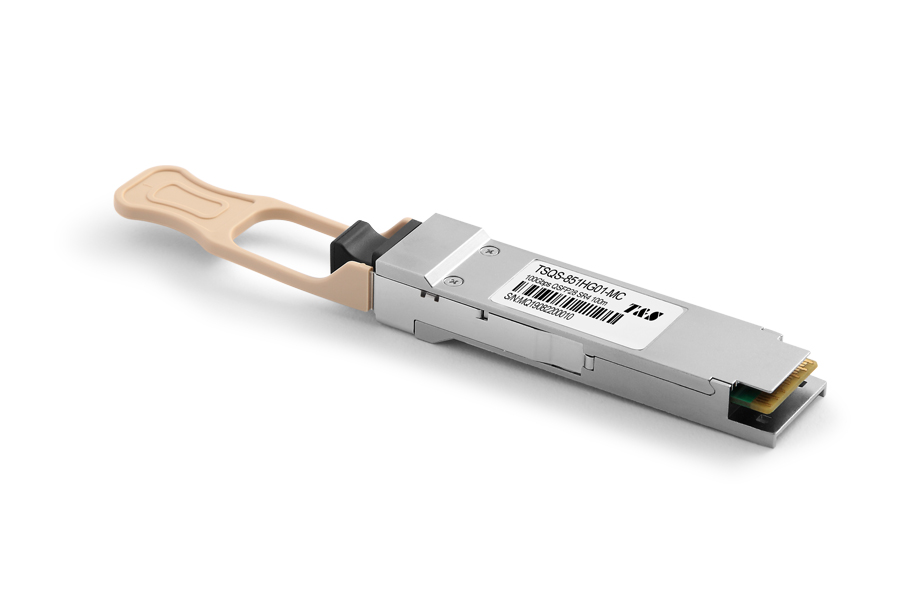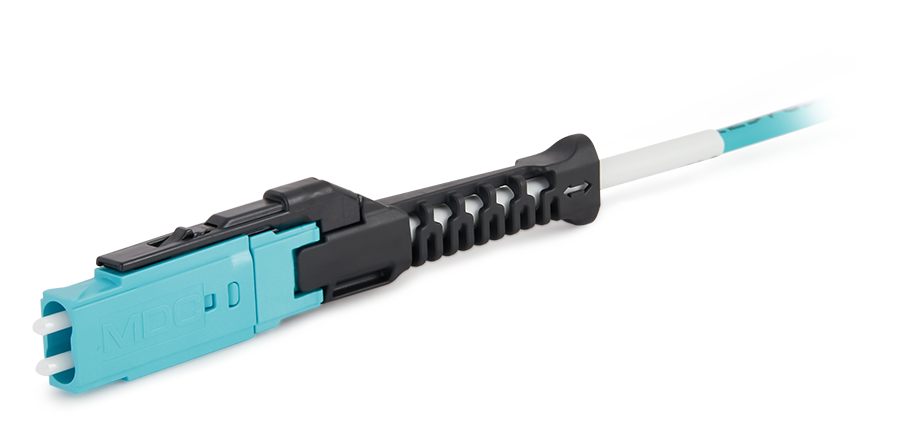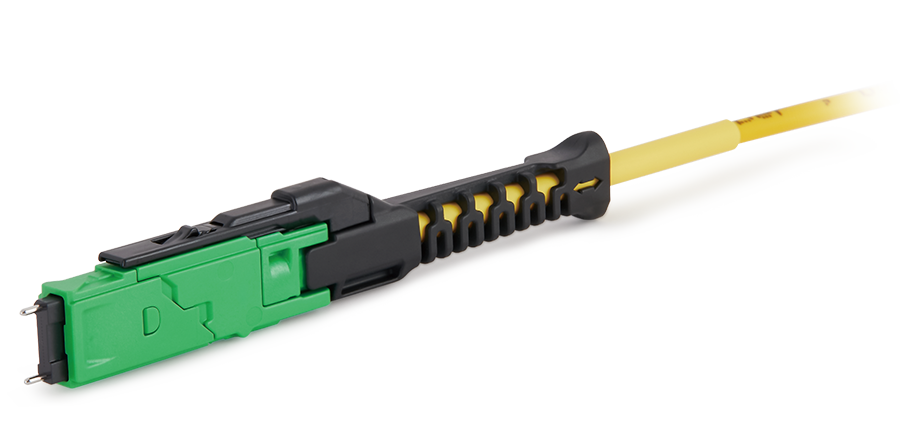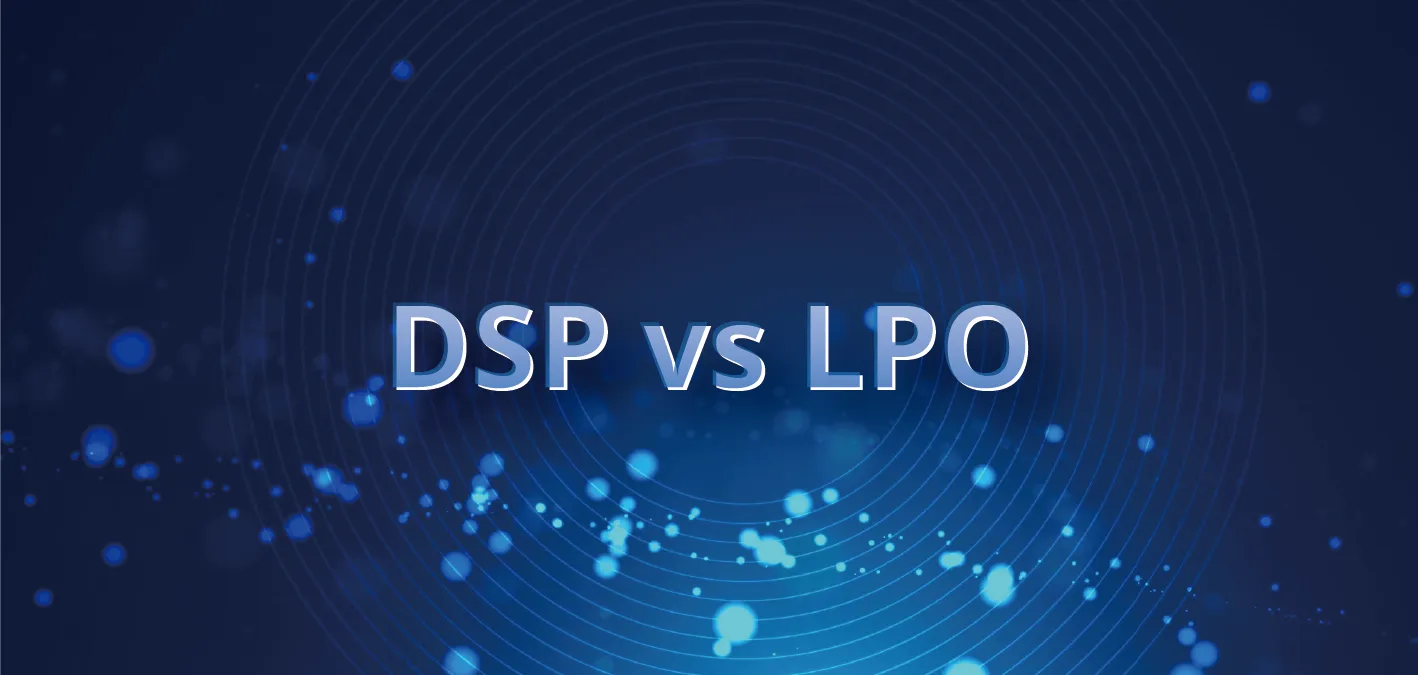The need for faster and more effective data transmission is pushing networking technology forward at an unprecedented rate. The creation and widespread use of 100 Gigabit transceiver optics are the result of this. In contemporary data centers and high-speed networks, these optical modules play a crucial role. Knowing the fundamental terms relating to 100g optical transceiver is definitely important for navigating this dynamic field.

Basic Terms About 100G Transceiver Optics
| 100GBASE-SR4 |
"SR" stands for Short Reach, and "100GBASE-SR4" is a common standard for 100G transceivers. Usually found in data centers, this kind of optic is intended for short-distance connections. High-density server configurations and inter-rack connections can benefit from its ability to transmit data up to 70 meters via multi-mode fiber (MMF). |
| 100GBASE-LR4 |
"100GBASE-LR4" is a long-reach transceiver standard as opposed to SR4. Long Reach, or "LR," is designed for connections over longer distances. Data centers on a campus or even across cities can be connected with LR4 optics since they use single-mode fiber (SMF) to transport data up to 10 kilometers. |
| 100GBASE-ER4 |
"100GBASE-ER4", which stands for Extended Reach and is used for long-distance connections, is comparable to LR4. With a reach of up to 40 kilometers, ER4 optics are made for even longer ranges. These are used in situations where it is necessary to connect data centers throughout a metropolitan area. |
| 100GBASE-ZR4 |
The 100G-ZR4 enables 100Gbps at distances reaching 80km to connecting: wireless access locations to core networks, distant enterprise locations to each other, widely separated regional data centers together, or remote service provider buildings tocentral offices. |
| 100G FR4 |
QSFP-100G-FR optical transceiver module is designed with duplex LC connectors, reaching a link up to 2km over single mode fiber(OS2).
The 100G FR4 converts the 4x25G NRZ electrical signals to a 1x100G PAM-4 optical signal. This transceiver is compliant with QSFP28 MSA and 100G Lambda MSA standards. |
| 100G PSM4 |
The Parallel Single-Mode 4 (PSM4) 100G transceiver technology applies four separate lanes of single-mode fiber.
A total of 100 Gbps is offered by the 100 Gbps per lane operation. For medium to long-distance connections, PSM4 optics are used, and they can span up to 2 kilometers. |
| 100G SWDM4 |
Using multi-mode fiber, 100Gbps data can be transmitted using the short wavelength division multiplexing (SWDM4) technology, which is still a relatively new invention. It provides the higher bandwidth of single-mode fiber while allowing the use of existing MMF infrastructure. SWDM4 supports for up to 150 meter transmission distances. |
| 100G CWDM4 |
100G CWDM4 is a technology that multiplexes four different wavelengths onto a single fiber. Each wavelength operates at 25 Gbps, resulting in a total data rate of 100 Gbps. CWDM4 is designed for medium to long-distance connections, with a reach of up to 10 kilometers. A single fiber can multiplex four different wavelengths using the 100G CWDM4 technology. A total data rate of 100 Gbps is achieved by operating each wavelength at a speed of 25 Gbps. With a reach of up to 10 kilometers, CWDM4 is intended for medium- to long-distance connections. |
| 100G 4WDM |
A single fiber can multiplex four different wavelengths using the 100G CWDM4 technology. A total data rate of 100 Gbps is achieved by operating each wavelength at a speed of 25 Gbps.With a reach of up to 10 kilometers, CWDM4 is intended for medium- to long-distance connections. |
| 100G Single Lambda |
A single wavelength is used to transmit 100 Gbps of data by 100G Single Lambda technology, also known as 100G CLR4.
As a result, the optical design is made simpler and uses less energy. With a range of up to 2 kilometers, single Lambda optics are frequently used for close proximity connections inside data centers. |
Two Modulations: PAM4 and NRZ
NRZ (Non-Return-to-Zero) and PAM4 (Pulse Amplitude Modulation, 4 levels) are two popular modulation schemes used in 100G transceiver optics. For higher-speed applications, PAM4 is more suitable because it transmits more data in a given bandwidth. Conversely, NRZ provides a lower data rate but is more reliable and simpler. The network's particular requirements will determine which of these modulation schemes is best.
Anyone working in the networking or data center industries must be familiar with the fundamental terms relating to 100G transceiver optics. Keeping up with these terms can help you choose the appropriate optics for your unique applications because technology is constantly evolving.
It is inevitable that even faster and more effective optical transceiver will be developed as the demand for higher data rates and wider bandwidth increases. For networking professionals, this will require ongoing learning and adaptation to new standards and technologies, making it an exciting and dynamic field.
If you are interested in high-speed data transmission, whether you work as an IT manager, network engineer, or just for fun, these basic terms will help you confidently navigate the constantly evolving field. Thus, remain knowledgeable, continue to learn, and get ready for the next big networking technology wave.

 Fiber Optic Flex Circuit (FOFC)
Advanced Simulation & Optimization, High Positioning Accuracy, Flexible Customization, Rigorous Reliability Testing
Fiber Optic Flex Circuit (FOFC)
Advanced Simulation & Optimization, High Positioning Accuracy, Flexible Customization, Rigorous Reliability Testing MDC Solution
US Conec's MDC connector is a Very Small Form Factor (VSFF) duplex optical connector, expertly designed for terminating single-mode and multimode fiber cables with diameters up to 2.0mm.
MDC Solution
US Conec's MDC connector is a Very Small Form Factor (VSFF) duplex optical connector, expertly designed for terminating single-mode and multimode fiber cables with diameters up to 2.0mm. MMC Solution
US Conec's Very Small Form Factor (VSFF) multi-fiber optical connector that redefines high-density connectivity with its cutting-edge TMT ferrule technology and intuitive Direct-Conec™ push-pull boot design.
MMC Solution
US Conec's Very Small Form Factor (VSFF) multi-fiber optical connector that redefines high-density connectivity with its cutting-edge TMT ferrule technology and intuitive Direct-Conec™ push-pull boot design. EN
EN
 jp
jp  fr
fr  es
es  it
it  ru
ru  pt
pt  ar
ar  el
el  nl
nl 




_and_High-Reflection_(HR)_Optical_Coatings.webp)
